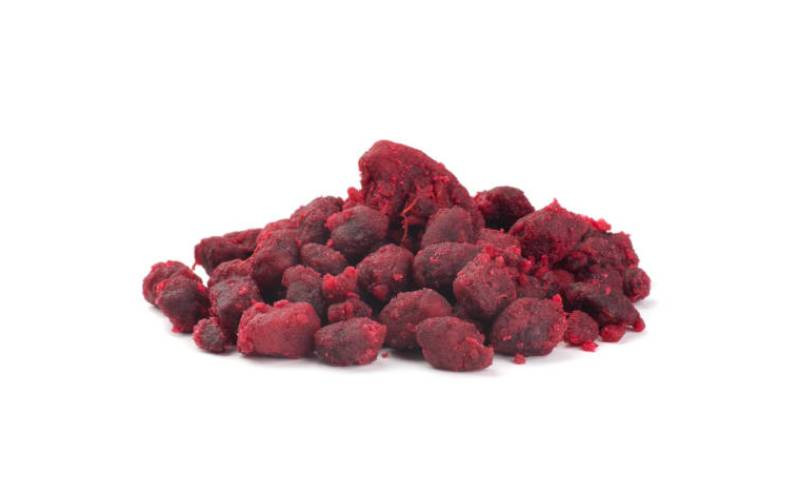
Honey is a sweet liquid made from flower nectar by bees. Interestingly, every particular type of honey has a particular flavour depending on the specific flower used in its production.
There are two common forms of honey, pasteurized and raw. Pasteurized honey is heated and processed to remove impurities whereas raw honey is bottled directly from the hive. As thus, raw honey contains traces of yeast, wax and pollen. As a benefit, consuming raw honey is believed to help with seasonal allergies due to repeated exposure to pollen.
Honey boasts of high levels of sugar – which provides it with its sweetness. It also has antiseptic and antibacterial properties.
Honey is mostly graded by its colour and the clear, golden amber honey often retailing at a higher price than the darker types.
Honey is the most important primary product of beekeeping, both quantitatively and economically. It is also the first bee product used by man and evidence of its use can be found in nearly every culture. As the only concentrated form of sugar available to man for a long time, honey received some reverence as it was a source of food and was used as a religious symbol, and in magic and therapeutic ceremonies in certain cultures.

Properties of honey
A spoonful of honey contains 64 calories, 17.3 grams of sugar and 0 fiber, fat and protein. BeeSource breaks down a typical honey profile as follows:
Fructose: 38.2 percent Glucose: 31.3 percent Maltose: 7.1 percent Sucrose: 1.3 percent Water: 17.2 percent Higher sugars: 1.5 percent Ash: 0.2 percent Other: 3.2 percentHoney has a slightly acidic pH of 3.9 (average). This pH level is what makes honey unconducive for the growth of bacteria, while its antioxidant elements clean up free radicals linked to diseases. This is why, when stored in an airtight container, honey is said to have no expiry.
Overall, the properties of honey vary depending on the specific flower used in its production as well as the water content in the honey.

Benefits of honey
Honey, since ancient times, has been used as both a medicine and a food. It is rich in beneficial plant compounds and has bountiful benefits. One of the healthiest ways honey is consumed is when it is used as a substitute to refined sugar as it is much lower in calories and virtually has no fiber, fat or protein.
Honey is rich in bioactive plant compounds and antioxidants. The darker types of honey, however, tend to have higher quantities of these compounds than the lighter types. While honey is generally low in vitamins and minerals, it is quite high in some plant compounds. Here are more benefits of honey:
Quality source of antioxidantsHoney contains a lot of important antioxidants including organic acids and phenolic compounds like flavonoids. It is the combination of these compounds that gives honey its antioxidant power.
Antioxidants have been linked with reduced risk of stroke, heart attack and some types of cancer. They are also considered to be helpful in promoting eye health.
The antioxidants in honey can also help lower blood pressure which is a major risk factor for heart disease. Honey contains antioxidant compounds linked to lower blood pressure. Eating honey, according to studies in humans and rats, may lead to a modest reduction in blood pressure.
A better alternative to sugar for diabetesFirst off, it is not conclusive that honey is perfect for people with diabetes. Some studies have found that honey can equally increase blood sugar levels but not as much as refined sugar does.
While honey can be a better alternative to refined sugar for people with diabetes, it should still be consumed with caution. In other words, honey shouldn’t be considered healthy for people with diabetes.
As you consume your honey, remember that there are given types of honey that are adulterated with plain syrup, something that is widely illegal yet remains widespread.
Improves cholesterol levelsLDL cholesterol (the bad cholesterol), if present in high levels, poses a great risk for heart disease. This type of cholesterol is responsible for the fatty buildup in arteries – atherosclerosis – which can often times result in heart attack and stroke.
Honey, according to several studies quoted by Pub Med, it helps reduce the level of ‘bad’ LDL cholesterol while significantly raising the levels of the good HDL cholesterol. In a study (in Pub Med) use of honey was compared to that of table sugar and it was found that honey caused 3.3% increase in HDL cholesterol while at the time reduced the level of LDL Cholesterol by 5.8%.
An increase in triglycerides, a type of fat (lipid) found in the blood, creates a major risk for heart disease. Triglycerides are also linked with insulin resistance, something that is responsible for type 2 diabetes. The levels of triglycerides tends to increase when we have a diet that is high in sugar and refined cards. However, several studies have shown that regular intake of honey can lower triglyceride levels particularly when honey is used as a substitute of sugar.
Burn and wound healingSince the ancient times, honey treatment has been relied on to heal wounds and burns. According to another study published in PubMed, honey is effective in healing partial-thickness burns – burns that are more serious as a deeper layer of skin is burned and they are more painful and easily infected – and wounds that became infected after surgery.
Honey is also a reliable treatment for diabetic foot ulcers. The wound healing properties of honey are effective in treating diabetic wounds. The healing by application of honey to diabetic wounds is more effective compared to normal wounds.
Honeys magical healing powers are believed to come from its antibacterial and anti-inflammatory effects as well as its ability to nourish tissues. Honey can also help treat skin conditions including psoriasis and herpes lesions.
In other words, honey, when applied to the skin, is an effective treatment for burns, wounds and a number of skin conditions. It is particularly effective in the treatment of diabetic foot ulcers.
Suppressing coughsCoughs, mostly common in children, is an upper respiratory infection and it can affect sleep and quality of life in general. Other than relying on the mainstream medications for coughs that can always have side effects, you can consider using honey.
Honey has proved to be a better choice and there is evidence that it is very effective. Honey can reduce cough symptoms and improve sleep better than some cough medication.
While honey may be very effective in treating coughs in children, it should not be given to children under the age of one due to the risk of botulism – a rare and potentially fatal illness. Symptoms may include difficulty swallowing, weakness, blurred vision, troubled speaking and paralysis.
All in all, the benefits of honey of honey are most pronounced when it is used as a replacement for other unhealthier sweetener.

Tips for honey diets
No doubt, experimentation is key when shifting to honey from sugar. However, it is important to know that using honey in baking may cause excess browning and moisture. Also, as a general rule, you use ¾ cupful of honey for every one cup of sugar. Here are more tips when including honey in your diet:
To sweeten your dressings and marinades To sweeten tea or coffee Drizzle on top of toasts and pancakes Mix into yogurts, cereals or oatmeal for natural sweetening If you didn't have to sleep, what would you do with the extra time? The Standard Group Plc is a multi-media organization with investments in media platforms spanning newspaper print
operations, television, radio broadcasting, digital and online services. The Standard Group is recognized as a
leading multi-media house in Kenya with a key influence in matters of national and international interest.
The Standard Group Plc is a multi-media organization with investments in media platforms spanning newspaper print
operations, television, radio broadcasting, digital and online services. The Standard Group is recognized as a
leading multi-media house in Kenya with a key influence in matters of national and international interest.










